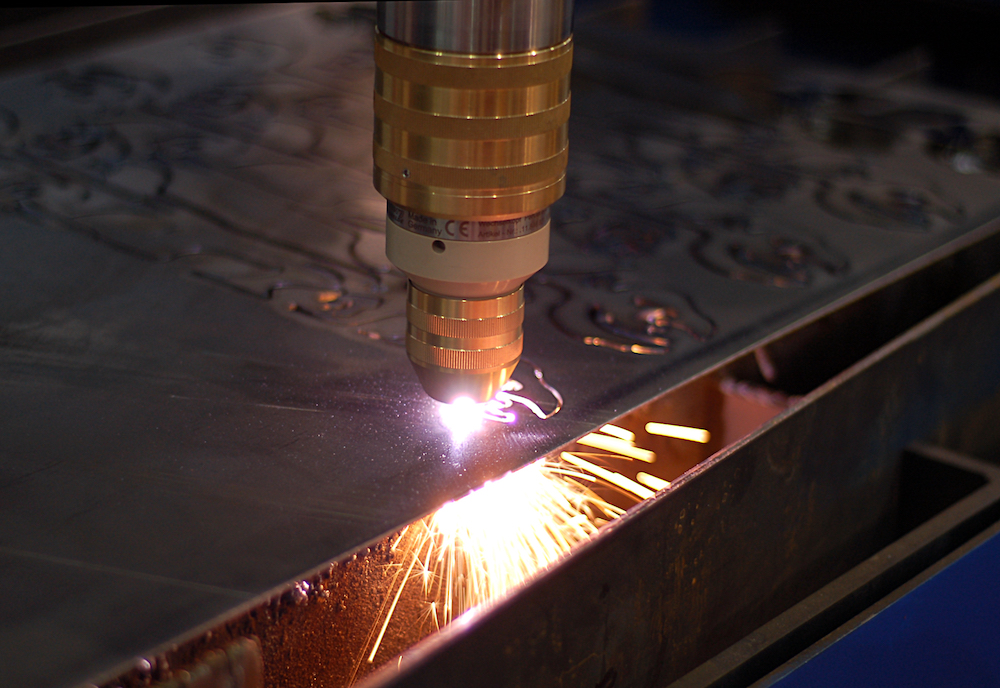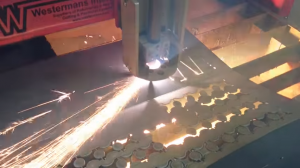When Plasma Cutting, there is Nothing Worse than Encountering Issues Mid Job.
Avoid costly downtime and frustration with these tips to help you avoid the most common problems encountered whilst plasma cutting.
Troubleshooting tips:
- Firstly, ensure the torch is properly assembled.
This means all of the parts should be fully aligned and fit together correctly.
This will ensure efficient gas and coolant flow and promote good electrical contact.
Threads should be clean and seating area should be free from material contamination. - Select the correct consumables for the job in hand.
This will depend on plasma gas being used and the cutting amperage.
Using the wrong torch parts can reduce cut quality and shorten parts life.
There will be a section in the machine manual dedicated to selecting the correct consumables for various types of cutting. - Replace consumable parts on a regular basis.
They go through a lot each time you use the machine, it is far more cost effective to replace the torch parts on a regular basis than it is to replace the torch itself.
Not replacing severely worn consumables can lead to uncontrolled arcing in the plasma chamber, leading to torch failure.
Keep an eye out for deteriorating cut quality, oxide residue present on the inside of the nozzle or signs of gouging on the inside/outside of the nozzle.
Electrodes – if the pits are deeper that 3/32″ for oxygen or 1/8″ for argon/nitrogen then it is time to replace these too.
General signs of wear and tear on the swirl rings should also be monitored, including cracks, dirt/grease in the holes and arc burns. If any are present they will need to be replaced. - Cleaning the torch should be priority.
It is important for operators to routinely keep an eye on the torch for signs of contamination.
Nozzle and electrode seating areas should be cleaned regularly to avoid becoming dirty and pitted.
Internal and external threads should also be kept in good condition, cleaned and re-tapped if necessary.
Use a cotton swab and electrical contact cleaner or hydrogen peroxide for the best results. - Avoid excessive application of O-ring lubricant and anti-spatter.
Too much can contaminate the torch and lead to premature failure, clog swirl rings and attract metal dust. This can create arcing problems and some may conduct electricity, ruining the torch.
The torch itself does not need any lubrication, this may also lead to any of the above so avoid this completely. When applying O-ring lubricant, use just enough to create a shine.
Shields must be removed before applying anti-spatter compound. - Torch collisions should be avoided at all times.
Causing irreparable damage, crashes can become very expensive.
Prevention is better than cure! Program the shape cutting software to travel around cut parts, rather than over them.
Invest in a torch height sensor, correcting for variations in work piece height.
Damage can be prevented by purchasing a breakaway torch mounting device if a collision does occur. - Check for efficient gas and coolant flow.
This should be checked on a daily basis as insufficient flow will cause defected parts life.
Excess pressure is a common cause of hard starting – when the torch will fail to arc when all other conditions are correct.
Plasma gas must also be kept clean and dry, contaminated gas causes premature torch failure and short consumable life.
Compressed air systems are prone to contamination. - Avoid Arc Stretching.
Whenever possible, edge start rather than pierce start because if the arc has to stretch to reach the metal, consumable parts will prematurely fail.
The nozzle orifice should be directly centered over the edge of the work piece when edge starting the plasma arc.
When piercing, set the stand-off to twice the height used for cutting, or the maximum height that will provide arc transfer.
Suitable timing of the arc-off signal will eliminate arc stretching at the end of the cut cycle. - Maintain Correct Stand-Off.
This is determined by the thickness of the material being cut.
Maintaining the correct stand-off allows the plasma arc to flow correctly.
If this is too high or too low it can cause damage to the torch or the work piece.
Manual applications can be assisted via a stand-off guide, mechanised systems can be manually set or maintained by automatic height control systems.
Common sense also prevails here – using the torch as a hammer to bang on the bench hoping it will remove slag or cut pieces will clearly do some damage.
If you have bought a machine from us, whether in warranty or not and you are having problems, give us a call and our technicians will be more than happy to help.
We offer new and used manual and mechanised plasma cutters from stock, speak to Craig for any requirements you may have. Or perhaps you are looking to sell a machine? Peter Westerman is our buyer, give him the details and he will let you know if there is any interest.
+44(0) 1162 696941 or welding@westermans.com


